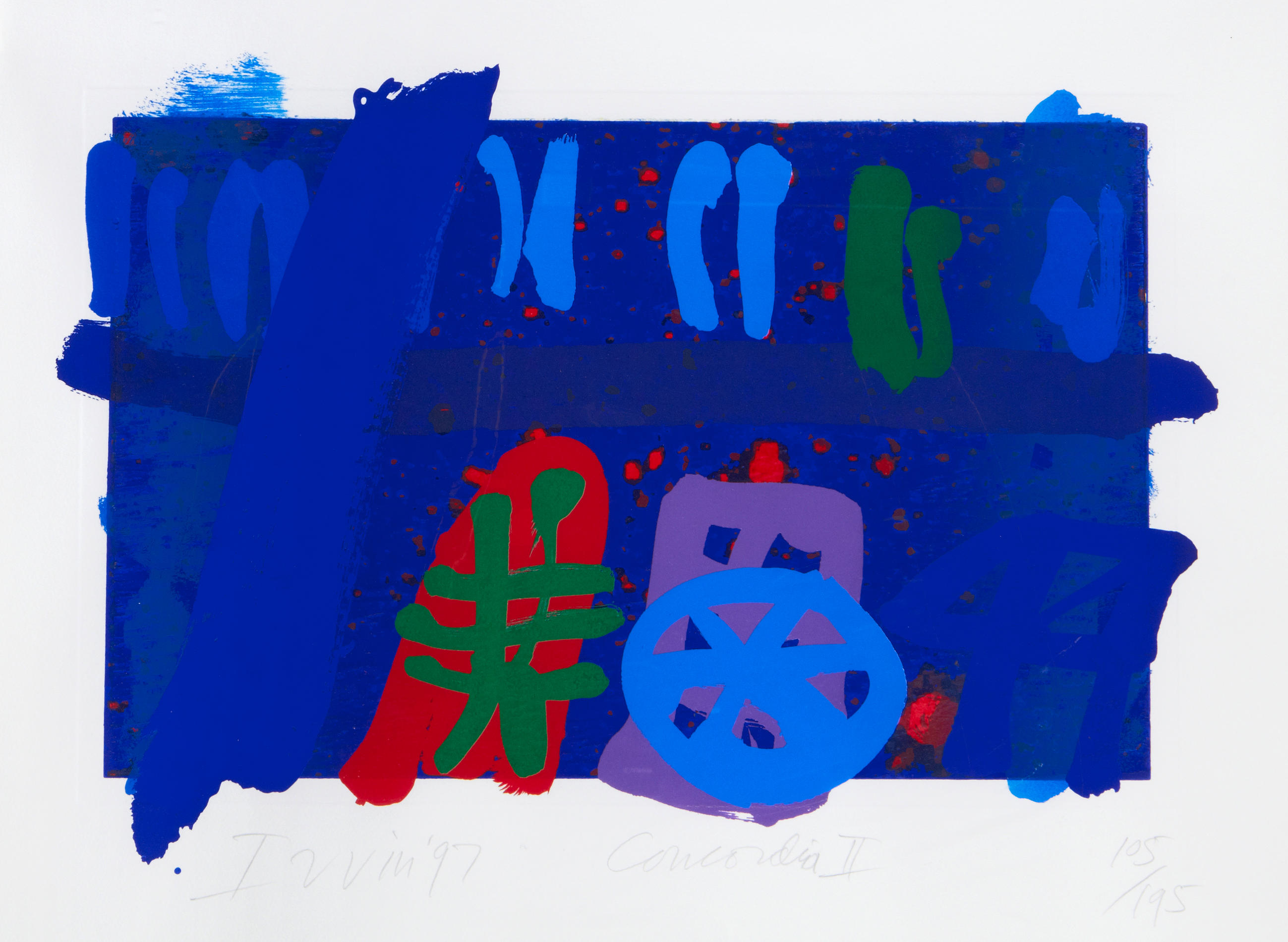If you go to any gallery show, the chances are you will see some huge paintings. Indeed, some are so big they might equally be described as murals. How much of that comes from the artist wanting more space in which to work, I wonder? It’s a value judgement, of course, but too often with contemporary art it seems to me to be a substitution of size for content.
Of course, simple marks can be transformed by increase in scale. Compare a single brush mark on a post card piece of paper with one drawn with full arm extension on a large canvas. In the first case, that mark is generally seen as a line. It marks off one area of the image from another without much in the way of detail. At the larger scale though, it becomes an element in its own right, it has internal structure and texture. That doesn’t mean that the huge sweeping mark is better than the small line. It’s just different. Increasing scale doesn’t, of itself, add artistic value, but it does open up the possibilities.
Contemplation
I read a quote from Mark Rothko about this. He wanted people viewing his work to enter into them.
The reason for my painting large canvases is that I want to be intimate and human. To paint a small picture is to place yourself outside your experience, to look upon an experience as a stereopticon view or with a reducing glass. However you paint the larger picture, you are in it. It isn’t something you command.
Mark Rothko https://www.markrothko.org/quotes/
He saw them as objects of contemplation, as an experience in itself rather than a record of an experience. Rothko’s paintings are indeed very large. Sitting close to them, as he wanted, it is easy to lose the world beyond the canvas. It fills your peripheral vision. After a while, the world beyond the picture fades away.
That experience is indeed a function of the scale. I tried making some versions of these works on 10” x 10” canvases. I don’t know how Rothko constructed his pictures. My approach was to build up layer after layer of colour in varying shades, wiping back, adding more colour and so on. What I got seemed to be a reasonable approximation of a Rothko surface. My relationship with it was, however, very different.
Analysis
This seems to be distinctive to Rothko, for me anyway. I had nothing similar, for example sitting in front of one of Gerhard Richter’s Cage series. To be fair, that was in a crowded show, not in a normal quiet gallery. I think there is just so much going on in the ‘Cage’ paintings that it’s easy to find oneself deconstructing them, working out how the layers lie over one another. This seems to be an analytical rather than a contemplative relationship. One of these days I intend to sit again in front of the ‘Cage’ series and see what happens.
I missed the exhibitions at the RA in London of work by Richard Diebenkorn and of the Abstract Expressionists. It is unlikely I’ll get another opportunity to see their work and make the same comparison. Watching film of Pollock at work, it is however possible to imagine achieving a similar contemplative state. His movements as he paints are like a ritual dance of some sort, with the marks and drips are forming a record of it, like some form of dance notation.
Deference
Modern art is not the only place to find the monster canvases, of course. David’s painting of “Napoleon Crossing the Alps” is about 2.6 m x 2.2 m. (There are five versions, all slightly different sizes.) Napoleon refused to sit for it, saying that the character that comes through was more important than the likeness. The resultant painting is meant to impress, to dominate the viewer. It is about Bonaparte the Emperor than Bonaparte the man.
So-called ‘History Paintings’ are all large scale. The term typically refers to any picture with a high-minded or heroic narrative, as illustrated by the exemplary deeds of its figures. The message must however be edifying and worthy of depiction.
Although perhaps not strictly speaking ‘history paintings’, the apocalyptic works of the Victorian painter John Martin also come to mind. Similarly, the revelatory, epic landscapes painted in nineteenth-century America. In all these works, the role of the viewer is almost to pay homage.
I’ve identified three distinct modes of relationship between the viewer and the very large painting; contemplative, analytical and deferential. I’m sure there are other ways of thinking about this relationship. In particular, I’m not sure if my ‘analytic’ response is driven by me being an artist myself.
I wonder though. Would a non artist react in the same way as I did to the works by the likes of Richter or would they just lose themselves in the colours and shapes?
What do you think?













